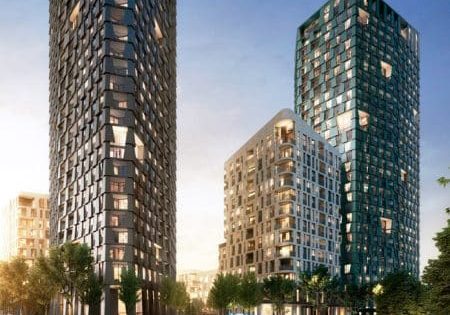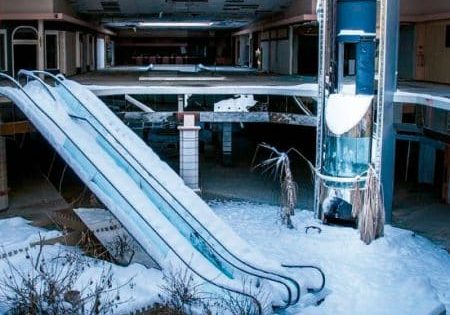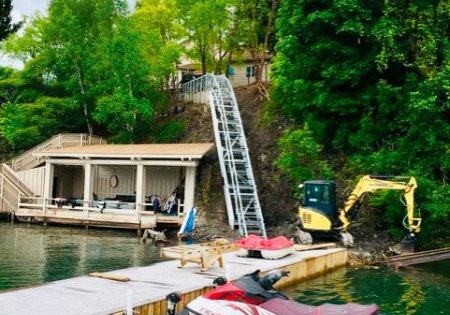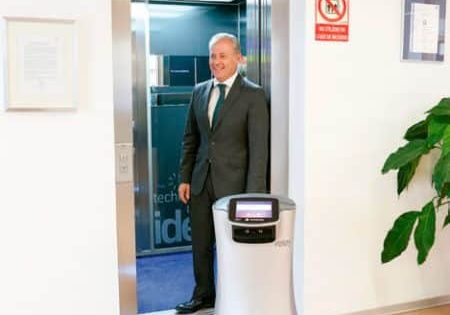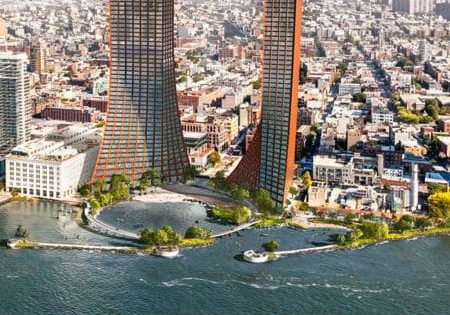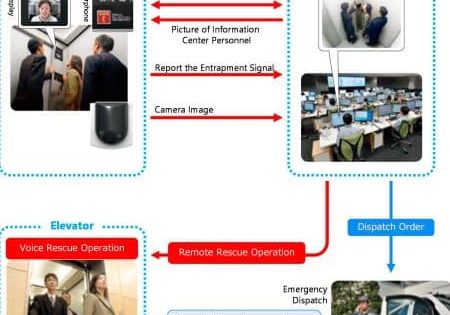IIoT and How It Applies to VT
Feb 1, 2020

Relayr executive talks about how his employer is making inroads in the industry.
A native of India who is based in Austin, Texas, Guneet Bedi (GB) is chief revenue officer/general manager at relayr, a company you may have noticed at recent vertical- transportation (VT) industry tradeshows. Founded in Berlin in 2013 by 12 engineers, the company now has offices in the U.S. (Boston and Chicago), Germany, Italy, England and Poland, and employs more than 250. It specializes in Industrial Internet of Things (IIoT), “spending the last six years building up its arsenal of technologies, which now includes an end-to-end IIoT platform, middleware offerings and data analytics.”[1] Its clients are primarily in the automotive-manufacturing, food-processing and power-generation industries, but its VT portfolio is growing.
In 2018, relayr was acquired by Hartford Steam Boiler (HSB) (ELEVATOR WORLD, November 2018), which inspects more than 80% of the elevators in the U.K. That ushered in an increased focus on VT for relayr, for which monitoring of industrial equipment (such as motors and pumps) is its bread and butter. As for elevator and escalator monitoring, a case study on its website states:
“relayr designed, implemented and visualized an entire elevator maintenance repair ecosystem for a large elevator manufacturer and service provider. The service contractor can now deploy service teams on an as-needed basis and uses the data to improve future products and installation. By digitalizing and visualizing data from thousands of elevators, relayr was able to reduce downtime and maintenance crew hours, generating savings of up to US$600 per elevator per year.”[2]
Helping clients achieve VT efficiency and money savings through data analytics is part of what relayr does. Bedi spoke with your author (KW) recently to provide greater insight about how the company’s VT offerings work and what the future might hold.
KW: Tell me about the structure of the company and how the company has evolved.
GB: We started the journey about five years ago as a startup very focused on IIoT. We raised a good amount of funding the first go-round, but, interestingly, our second round of funding came from HSB, a subsidiary of Munich, Germany-based insurance company Munich RE. We approached them about becoming a partner, because, as you know, industrial-insurance clients have a lot of assets that need to be insured, and IIoT can help. They said, “Yes, but you have to have a business plan about how we can start putting warranties and guarantees on business outcome, so that you can actually guarantee the promises you’re making with IIoT.” Fast-forward five years, and we’re a wholly owned subsidiary of HSB in Hartford, Connecticut. Basically, the technology arm of a reinsurance company owns us. Our 250 people are based all over the world. Chicago is our North American headquarters, and our R&D department is in the Chicago suburb of Batavia, Illinois.
[As of late 2019], we had 20,000-
30,000 elevators under contract, so I think our installed base is pretty substantial versus other players.
KW: Did coming under the umbrella of HSB usher in the era of VT for you guys?
GB: It didn’t usher it in, but it helped. We had elevator business before — small independents and some certification authorities in Germany, for example. HSB inspects most of the boilers and elevators (80%) in the U.K., so it has really been a good complement to our business.
By digitalizing and visualizing data from thousands of elevators, relayr was able to reduce downtime and maintenance crew hours, generating savings of up to US$600 per elevator per year.
KW: Who are your VT customers, and how big a portion of your business is VT related?
GB: Primarily, we do business with independents and certification authorities. Elevators are not relayr’s main business, but we have a pretty large footprint of industrial Computer Numeric Control (CNC) machines such as motors and pumps, and elevators are one of the verticals within that.
As a company, VT is a relatively small part of the portfolio. But, from a size perspective and an IIoT perspective, we might be one of the biggest, because it’s such a new market. [As of late 2019], we had 20,000-30,000 elevators under contract, so I think our installed base is pretty substantial versus that of other players.
KW: What are some examples of the type of VT monitoring relayr does?
GB: We do a lot of monitoring of acoustics — how the elevator is sounding — through microphones. Through that, we found that doors are one of the biggest problems, especially for maintenance personnel. We have lasers that work to position the car and acoustics monitoring for both the car and door. We do luminosity sensing to see if the lights are on or off. That is more for compliance. We measure vibration, which is one of the key elements in determining how well an elevator is being maintained and how well it’s running. These types of monitoring really help with predictive maintenance.
KW: Are relayr’s digital-twin technologies — that create and visualize synchronized doppelgangers for machines or processes — being used by your VT clients?
GB: Absolutely. All the data about vibration, temperatures and luminosity go into a visualization that we call the digital twin. We add algorithms and artificial intelligence. Digital twin fulfills a very fundamental need in the market.
KW: What have you found is the best way to grow business?
GB: Tradeshows are probably the most relevant, because we can communicate with people on a very personal level. We’ve been attending VT tradeshows and other events actively for the past 12-18 months. The first one was the National Association of Elevator Contractors (NAEC) Spring Educational Conference three years ago in Scottsdale, Arizona. After that, we attended two additional NAEC expos, and we’ve done international events, including two Interlifts in Germany and LIFTEX in the U.K. We’ve started to double-down on tradeshows, with the goal to attend 10-12 shows globally each year, mostly in Europe and the U.S.
KW: What is on the horizon for relayr? Any new products coming out?
GB: What we are calling a full-service enablement offer is really our focus. For the VT sector, the full-service enablement offer is for independent service providers that have remote monitoring enabled by relayr. relayr and HSB could create programs with insurance and, possibly, financing to help create a guaranteed-uptime offering.
As an example of a major disruption we believe could be coming down the road for the industry, an elevator buy-back program would allow a service provider to buy back elevators from a company. As you know, a lot of companies are focusing more on CAPEX (capital expenditures) rather than OPEX (operating expenditures). We are seeing a lot of interest in us doing elevator buybacks — where the property manager does not own the equipment but pays for use. We’ve done this in other markets — motors and compressors, etc. If you think about 20% of the investment for an owner or property manager is buying the elevator, and 80% is maintaining it during its lifecycle, we could take over the maintenance, and that could be very interesting. It’s in the very early days, but it’s moving faster than you would think.
“We’ve started to double-down on tradeshows, with the goal to attend 10-12 shows globally each year, mostly in Europe and the U.S.”
The other thing, and this is very Central European — focused on places like Austria and Switzerland — we’re looking at providing digital certification. Today, a lot of inspections happen manually. It has to be done every month in Germany. If companies can do it digitally, compliance would be easier, and that would be super helpful to them.
KW: So, right now, that effort is aimed strictly at central Europe?
GB: It is. We’re evaluating how we could do the same in the U.S. I think the challenge in the U.S. is elevator codes and regulations vary state to state. In Germany, it is pretty straightforward.
In our other markets, we have a lot of business in Indiana, Ohio, Michigan and other places in the Midwest where retiring workforce is a big challenge. Millennials don’t want to become a textile worker or an elevator technician. We would like to look at how we could address the labor shortage by providing a mobile app that inspects elevators.
KW: But can technology and machines really perform as well as a person?
GB: No, I don’t think so. I think it has to be a combination of machine and human. But a lot of the mundane and inefficient tasks can actually be done better by an automated system. One, it enhances efficiency, and people can do a lot more. Two, it improves accuracy. Even if you have 20 years’ experience, how you hear and think about an elevator problem, versus how the next technician hears and thinks about it could open up the possibility of human error. Detection with a sensor would be more consistent. The human touch is valuable, since a person can validate results. Before automation, 70% of the U.S. population was working in agriculture. Today, that number’s 2%, but that doesn’t mean removal of humans. They are still very much involved, but the process is a lot more efficient. A similar trend could happen in the VT industry.
References
[1] Buntz, Brian. “Relayr Strives to Cut Risk Out of Industrial IoT Deployments,” IoT World Today, April 10, 2019.
[2] relayr.io
Get more of Elevator World. Sign up for our free e-newsletter.


